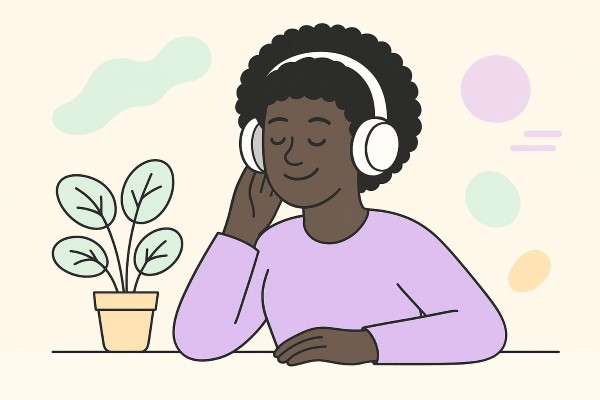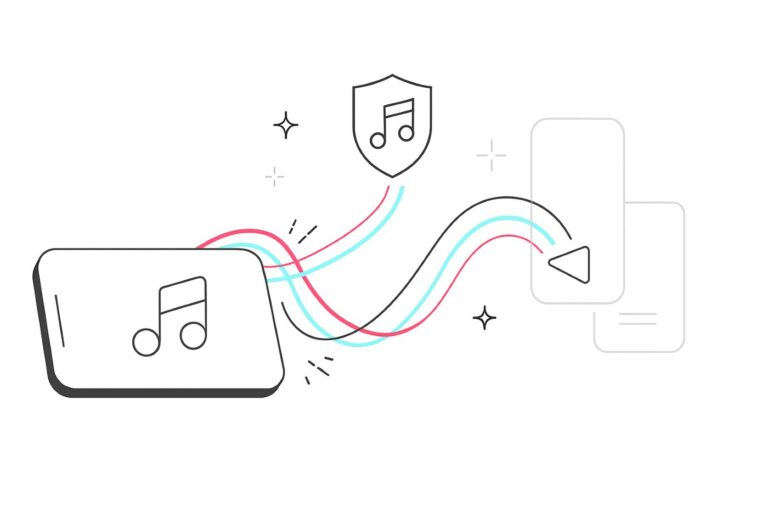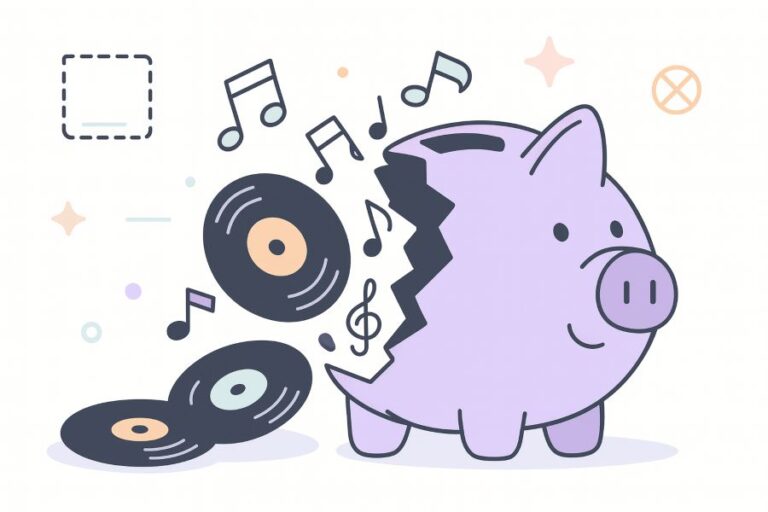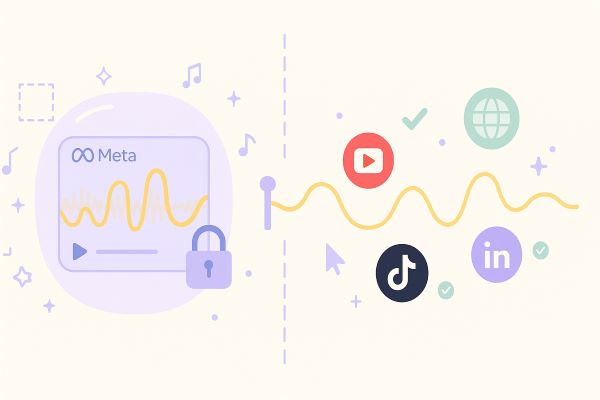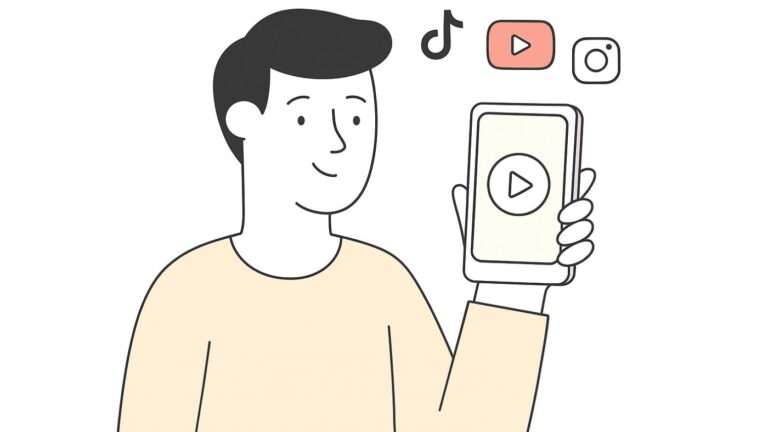YouTube Audio Library (Royalty-Free Music): Licensing, Monetization & Claim Fixes (2025)
Audiodrome is a royalty-free music platform designed specifically for content creators who need affordable, high-quality background music for videos, podcasts, social media, and commercial projects. Unlike subscription-only services, Audiodrome offers both free tracks and simple one-time licensing with full commercial rights, including DMCA-safe use on YouTube, Instagram, and TikTok. All music is original, professionally produced, and PRO-free, ensuring zero copyright claims. It’s ideal for YouTubers, freelancers, marketers, and anyone looking for budget-friendly audio that’s safe to monetize.
The YouTube Audio Library adds royalty-free music and SFX that avoid claims, protect ad suitability, and make videos revenue-ready fast – with attribution notes and built-in tools if something goes wrong.
What the “YouTube Audio Library” actually is
YouTube Audio Library is YouTube’s catalog of royalty-free music and sound effects for creators. You browse it inside Studio, download tracks, and drop them into edits. Each track shows a License type so you know if attribution is required today.
%20Licensing%2C%20Monetization%20%26%20Claim%20Fixes%20(2025)/YT%20Audio%20Library.jpg)
When your channel joins the YouTube Partner Program, videos using Audio Library music or SFX are eligible for monetization, provided they meet policies. Some tracks carry Creative Commons Attribution (copy the credit from License pop-up and paste it in the description).
Creator Music, also inside Studio, offers commercial songs with two options. Buy a license to keep your ad share on that video, or choose revenue sharing with rights holders. Track availability, pricing, and terms vary by region and channel eligibility.
%20Licensing%2C%20Monetization%20%26%20Claim%20Fixes%20(2025)/YouTube%20Creator%20Music.jpg)
Use the Audio Library when you want claim-safe music that works on YouTube. Switch to Creator Music when you need familiar songs without gamble: either license and keep ad share, or share revenue under the track’s terms shown in Studio.
How to access it fast (Studio → Audio Library)
Open YouTube Studio, go to the left sidebar, and click Audio Library. The catalog loads with search at the top and tabs for tracks saved. Use play icons to preview, then hit Download when you find a cue you like.
%20Licensing%2C%20Monetization%20%26%20Claim%20Fixes%20(2025)/Where%20to%20find%20Audio%20Library.jpg)
Filter results by Mood, Genre, Instrument, or Duration to match pacing. Toggle Attribution required to show only tracks that need credit, or hide them if you prefer no-credit songs. Sort by date, name, or popularity to surface fresh options quickly.
%20Licensing%2C%20Monetization%20%26%20Claim%20Fixes%20(2025)/Where%20to%20find%20Audio%20Library%201.jpg)
The library includes music tracks and a full Sound effects tab. Use effects for transitions, UI clicks, ambience, and stingers without hunting elsewhere. Preview levels on headphones, then save favorites so you can find them later inside Studio during edits.
Audio Library rules (the parts people miss)
Creators often assume “free” means “anything goes.” It doesn’t. The Audio Library is generous, but you still need to follow the license shown for each track, meet monetization policies, and understand where your rights start and stop on YouTube.
Attribution
Some tracks require Creative Commons Attribution. When you see “Attribution required,” you must credit the artist exactly as shown on the track’s License type pop-up in Studio. Copy that credit line and paste it into your video description without edits or shortcuts.
%20Licensing%2C%20Monetization%20%26%20Claim%20Fixes%20(2025)/Attribution.jpg)
If you adapt a CC-BY track – shorten it, loop it, or mix it under voiceover, say so in the credit line. Note that you “edited for length” or similar. Proper attribution keeps you compliant and avoids avoidable disputes or takedown escalations later.
Monetization
If you’re in the YouTube Partner Program, you can monetize videos that use Audio Library music or SFX, provided the video meets YouTube’s policies. The Library exists to be copyright-safe on YouTube, so Content ID shouldn’t claim these files when used as intended.
%20Licensing%2C%20Monetization%20%26%20Claim%20Fixes%20(2025)/Monetization.jpg)
Rights alone don’t guarantee green icons. Your channel still must follow monetization policies: original content, meaningful commentary or transformation, and advertiser-friendly packaging. Reused, low-value, or policy-sensitive videos can receive limited ads or lose monetization regardless of perfectly licensed music.
Off-platform rights
“Copyright-safe on YouTube” doesn’t equal a universal, anywhere license. YouTube vouches for use on YouTube only. If you need the same track in a podcast, Instagram reel, or client TV spot, you must confirm rights beyond YouTube before you publish.
%20Licensing%2C%20Monetization%20%26%20Claim%20Fixes%20(2025)/Off-platform%20use.jpg)
Check the License type on the track page. CC-BY can allow wider use with attribution, but you still need to read the terms. Standard “Attribution not required” entries are designed for YouTube use. When in doubt, contact the copyright owner or choose a third-party license.
Video formats
Long-form uploads and Premieres are fine. Drop Library tracks into your edit, follow the license, and publish. If your channel and video meet YouTube’s monetization and ad-suitability policies, you can turn on ads just as you would without background music.
Shorts are fine, too. You can use downloaded Library tracks in your vertical edits. Because the Library is cleared on YouTube, Content ID shouldn’t claim them. Be careful with outside audio sources for Shorts – off-platform “free” tracks often trigger mismatches and claims.
Live streams commonly use Library tracks as background beds. Keep levels conservative under speech. Creator Music licenses generally do not cover live use, so if you need music during a stream, stick to the Audio Library, your own compositions, or properly licensed royalty-free music.
Commercial use & ads
On YouTube, commercial use is allowed. If you’re in YPP and follow the track’s license, you can monetize videos that include Audio Library music or SFX. The Library’s purpose is to give creators safe audio that works with monetization on YouTube.
Sponsored videos also qualify. Disclosure and ad-suitability still apply, but background music from the Audio Library remains eligible when you follow the License type and broader channel policies. Keep proof handy and store links to the track pages with your project files.
If you run the same video as a paid YouTube ad, you’re still on YouTube. The same rule applies: using Library audio is permitted. Focus on suitability and creative approvals. If a claim ever appears by mistake, use Studio’s editing tools or dispute with the track details.
Editing tracks
Yes. You can edit Library tracks to fit your video – trim, loop, fade, add voiceover, or build short intros and outros. What you can or must do depends on the License type shown for that track inside YouTube Studio. Always check it before you export.
If the track is Creative Commons Attribution, you may remix, transform, and build upon it – even commercially – so long as you credit the artist and indicate that you made changes. Write a clear credit line in your description so reviewers and claimants see it quickly.
%20Licensing%2C%20Monetization%20%26%20Claim%20Fixes%20(2025)/Editing%20scope%20(what%20you%20can%20change).jpg)
To get the exact wording, open the License type pop-up for that track in the Audio Library and copy the attribution text. Paste it into your description and keep a note that you edited the music. Consistent, accurate credits prevent needless friction and delays.
If the track’s License type says “Attribution not required,” it’s the standard YouTube Audio Library license designed for on-YouTube use. You can cut, loop, or use a middle section under voiceover without special wording, then publish as usual if the video meets policies.
When the Audio Library doesn’t work
You need to post the same video off-YouTube – on Instagram, a website, in an app, or for broadcast. The Library only covers use on YouTube and doesn’t extend rights elsewhere. For guaranteed cross-platform coverage, choose a license that explicitly includes those placements.
You don’t want to credit an artist and the track is CC-BY. Some Library music requires Creative Commons attribution. Copy the exact credit from the License type pop-up and place it in your description. The “Music in this video” section isn’t a substitute. Pick “Attribution not required” if needed.
You need WAV or FLAC deliverables. The Library provides MP3 downloads inside Studio and doesn’t document high-resolution formats. If your workflow, client, or platform spec demands lossless audio, stems, or broadcast-ready masters, source music from a catalog that offers those deliverable options.
%20Licensing%2C%20Monetization%20%26%20Claim%20Fixes%20(2025)/MP3%20file.jpg)
You want paperwork or indemnity for procurement peace of mind. The Library doesn’t issue license certificates or indemnification; guidance simply states tracks are copyright-safe on YouTube. If legal documents, insurance language, or client sign-off forms are required, purchase from a provider that supplies formal agreements.
You specifically want recognizable commercial or pop hits. The Library is a royalty-free production catalog, not a repository of chart songs. If you need a familiar track, use Creator Music inside Studio or a third-party licensing service that clears that specific recording for your use.
You need stems, alternate mixes, or cutdowns on demand. The Library documents MP3 track downloads and doesn’t provide multitracks or version packs. When projects require no-melody mixes, drums-only, :15/:30/:60 cutdowns, or stems for tight edits, choose a library that includes those variations.
Common pitfalls (and quick fixes)
You skip attribution on a CC-BY track and trigger flags. Check the License type, copy the exact credit from the pop-up, and paste it in your description. Save a description template so you never miss required credits when publishing fast.
%20Licensing%2C%20Monetization%20%26%20Claim%20Fixes%20(2025)/Common%20pitfalls%20(and%20quick%20fixes).jpg)
You paraphrase the credit and break the license. Use License type pop-up as your source of truth. Copy the wording exactly, including punctuation and links, and add “edited for length” when you modify the track. Consistency prevents disputes and delays.
You grab “free” tracks from channels and invite claims. Always download from Studio’s Audio Library so YouTube recognizes the file. Verify the track page, then keep the link with your project notes. Avoid reuploads, mashups, and mislabeled packs circulating off-platform.
You reuse Library music on Instagram, client websites, or apps and expect the same protection. The Library covers YouTube only. For cross-platform distribution, secure a license that names those placements, or choose a royalty-free catalog that explicitly permits them upfront.
“What if I get a claim on Audio Library music?”
It’s uncommon, but mismatches and third-party uploads happen. If a claim appears:
Verify the source in Studio → Content → Restrictions.
Use YouTube’s editor to Replace song (pick another Audio Library track), Trim, or Mute to clear the claim fastest.
%20Licensing%2C%20Monetization%20%26%20Claim%20Fixes%20(2025)/What%20if%20I%20get%20a%20claim%20on%20Audio%20Library%20music.jpg)
If you’re certain you’re right, dispute the claim and mention the exact Audio Library track used. The claimant has 30 days to respond. If they reject and you Appeal, they have 7 days to release/keep/takedown (a takedown becomes a strike, so only appeal when you’re confident).
When to use Creator Music instead
Need a specific commercial song for long-form? Switch to Creator Music when recognition matters more than a generic bed and you want clear, in-Studio terms.
Buy a license (upfront)
Pay once (some tracks cost $0) and keep your full ad revenue – the same share you’d keep without music. Choose this when you want a popular track and predictable earnings, plus simple rights you can reference later inside Studio.
%20Licensing%2C%20Monetization%20%26%20Claim%20Fixes%20(2025)/Buy%20a%20license%20(upfront).jpg)
Revenue sharing
Use an eligible song with no upfront fee, then share that video’s ad revenue with the rights holders. Studio shows the usage terms for each track. This path lowers cash outlay, but it also reduces the revenue you keep on that specific video.
%20Licensing%2C%20Monetization%20%26%20Claim%20Fixes%20(2025)/Revenue%20Sharing.jpg)
Edge case to know
Some rights holders set “restricted usage” rules, like allowing up to 30 seconds in videos over three minutes. If you exceed those limits without buying a license, you lose protection and invite claims. Always read the track’s details before you publish.
%20Licensing%2C%20Monetization%20%26%20Claim%20Fixes%20(2025)/Edge%20case%20to%20know.jpg)
Third-party royalty-free libraries
Third-party royalty-free libraries work well when the license plainly covers YouTube and monetization. Confirm scope up front: ads allowed, worldwide territory, perpetual term, client projects, edits and cutdowns, and claim handling. Read restrictions on reselling, re-uploading, and template use rules.






Save the paperwork. Download the license PDF and receipt, and store the license ID, track URL, email, and order number alongside the video project. You’ll need that proof to clear mismatched Content ID claims or answer advertiser reviews without delays.
YouTube monetization expects you to own rights to every element: music, SFX, footage, and images. Verify the license permits monetization and sponsorships on YouTube. Missing rights can trigger claims or limited ads, even when your editing and self-certification look perfect.
Safe music upload (60-second workflow)
Pick the Source
Audio Library, Creator Music, or Third-party RF
Proof Pack
Save the license PDF/receipt, license ID, and track URL
Unlisted Test
Upload unlisted to catch Content ID matches before launch
Publish & File
Turn on monetization and file licenses by video URL/ID
Using the YouTube Audio Library? Open the track in Studio, check the License type, and copy the exact attribution if required. For Creator Music, choose Buy license to keep your full ad share or Revenue sharing to skip the upfront cost. With third-party royalty-free libraries, confirm the license explicitly allows YouTube and monetization, including ads, sponsorships, worldwide territory, and a perpetual term.
Build a small proof pack before you upload. Save the license PDF or receipt, the license ID, and the track URL, and keep them with your project notes. This packet lets you clear mismatched Content ID claims quickly and answer brand reviews without digging later.
Run an unlisted test upload to surface any claims early. Check the Restrictions column in Studio, fix issues, and only then switch the video to public. This simple step prevents launch-day surprises.
When you publish, turn on monetization if you’re eligible and paste the attribution for any CC-BY track directly into your description. File your proof pack in a folder named with the video URL or ID so you can grab everything in seconds if a dispute comes up.
Bottom line
Default to YouTube Audio Library for claim-safe music on YouTube, credit CC-BY when required, test unlisted, and keep proof. For recognizable songs, use Creator Music. For cross-platform, stems, or paperwork, choose a third-party license that explicitly covers your placements everywhere.

Audiodrome was created by professionals with deep roots in video marketing, product launches, and music production. After years of dealing with confusing licenses, inconsistent music quality, and copyright issues, we set out to build a platform that creators could actually trust.
Every piece of content we publish is based on real-world experience, industry insights, and a commitment to helping creators make smart, confident decisions about music licensing.








